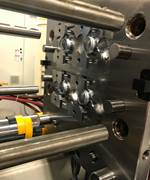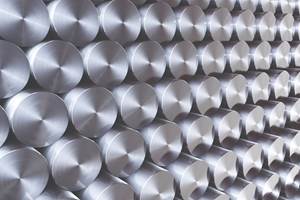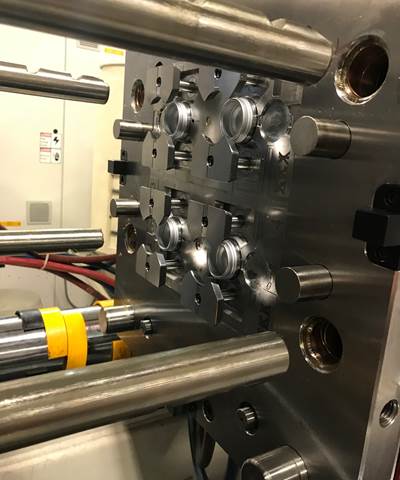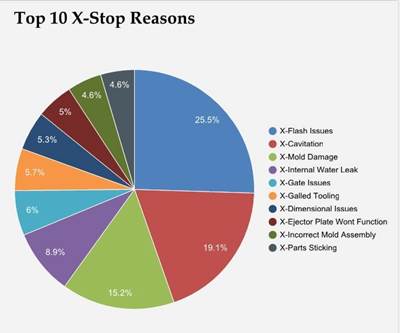
Automated quoting software allows RFQ data to live in one location to make quotes more accurate and help moldmakers become more profitable. Images courtesy of Paperless Parts.
Moldmakers are facing the music of Industry 4.0, and—no surprise here—the conductor is the customer. Expectations for customer service are higher than ever and reshaping how businesses operate. It’s no longer enough to tighten up customer-facing roles and processes; every piece of the shop must be optimized to deliver. Quoting is no exception—it’s the overlooked linchpin of customer service. Today’s buyers want faster quotes, shorter lead times and clear communication from manufacturers. These demands require a level of efficiency that manual or analog quoting (i.e., ERP, pen-and-paper or Excel systems) cannot provide.
To note, moldmaking is complex enough without new customer expectations upping the ante. The black art of manufacturing, moldmaking requires precise navigation of cavities, side actions and structure. It can take 30 years of experience for someone to master the art of quoting molds, so what more can shops be doing to ensure their art form doesn’t go extinct?
Automating steps in the quoting process will help moldmakers achieve more efficiency, reduce bottlenecks, increase production speed and trim costs. It will also allow shops to cut back on data entry, which can improve accuracy and free up experienced employees for more strategic work. Some moldmakers may be skeptical of automation; others might see the value but not believe now is the right time to invest. Read on to learn why and how mold manufacturers should automate quoting today.
The geometry of the mold being made drives the entire process—so naturally, it should guide quoting.
Why Now is the Time to Optimize Quoting
As moldmakers know, the goal of quoting is to spend the least amount of time and effort possible to return a quote to a buyer at a price that they are willing to pay, and that generates adequate profit for the business. ERP, Excel or pen-and-paper systems are getting in the way of this goal. Many moldmakers lose sight of the costs along the quote-to-cash journey. There is a lot of manual work required to track, manage and review each request for quote (RFQ), and customer data is often spread across systems and people, which creates bottlenecks and inconsistencies.

Automated quoting software allows moldmakers to automate the quoting process in just a few clicks.
When an RFQ gets to engineering, it takes time to determine if the shop can make the part, and mistakes can be costly. Many manufacturers are over-engineering quotes, spending a significant amount of time engineering jobs that are never won. ERP systems are a root cause of this because they use hours as the primary level to drive pricing, often burying the variables that an estimator might want to adjust. As a result, many estimators using ERPs have fallen into the habit of reducing time to lower prices (e.g., quoting eight hours to do a job and then pricing it for six). They win the job but have set an expectation that makes it hard to plan and schedule.
By the time moldmakers send the quote, they have wasted precious time and resources. Many are losing jobs because they can’t deliver quotes fast enough, and some are even ignoring RFQs because they don’t have enough time to quote them. The more time shops spend quoting, the less time they can dedicate to selling to new customers. If quotes are taking too long, manufacturers will lose customers—which no one can afford right now.
Competitors that automate quoting will pull ahead of those who don’t, and there’s no turning back. There are many modern solutions that address each barrier on the quote-to-cash journey. Centralized quoting allows customers to fill out a digital RFQ form that automatically takes information and feeds it into the quoting platform. Digital quotes make it easy to connect with customers and can provide purchase options to maximize the chance of offering a price a buyer will pay.
Online collaboration tools make it easy for manufacturers to communicate within the shop, helping to eliminate bottlenecks. The most game-changing capability, however, is geometry.
Automated quoting allows shops to cut back on data entry, which can improve accuracy and free up experienced employees for more strategic work.
The Power of Geometry-Driven Quoting
The geometry of the mold being made drives the entire process—so naturally, it should guide quoting. A geometric engine makes automated quoting faster and more accurate than any done with an ERP system or manually. Built into the quoting platform, the engine can analyze parts based on moldmakers’ capabilities and organize essential data about the mold, so different estimators can collaborate and make more informed decisions. With this front-end insight, shops can assess manufacturability before wasting time engineering a mold that they won’t be able to make.
Moldmakers can also leverage geometric features to power their pricing formulas. With this capability, shops can improve accuracy with part-level operations and pricing templates—getting granular and adding yield rates, markups and overhead costs. The geometric engine classifies the mold, and then moldmakers can use a historical search to identify when they have produced similar molds in the past, using that pricing as a reference point.
As a result, quotes become much more accurate, which helps moldmakers become more profitable. With Excel-based systems, the line between costing and pricing can be blurred.
Costing is the science of figuring out every step required in the manufacturing process and the cost associated with each. These costs are then added to the cost of materials, overhead and desired profit margin. Pricing is the art of recognizing the true value in the service being provided outside of the cost alone and being able to capture that value accordingly. This includes extremely fast turnaround times, high accuracy on increasingly complex parts and unique or proprietary manufacturing processes.
Geometry-driven, automated quoting is the way of the future. Industry 4.0 is calling for the optimized moldmaker—a company that maximizes all its resources. Technology plays an essential role in that transformation. Leaning on the old systems will mean clinging to the outdated processes and inefficiencies, too.
Related Content
How to Eliminate Chatter
Here are techniques commonly used to combat chatter and guidelines to establish a foundation for optimizing the moldmaking process.
Read MoreWhat You Should Consider When Purchasing Modified P20 Steel
When buying P20 steels that have been modified, moldmakers must be aware of the variations and key issues that affect delivery, cost and lead times.
Read MoreThe Benefits of Hand Scraping
Accuracy and flatness are two benefits of hand scraping that help improve machine loop stiffness, workpiece surface finish and component geometry.
Read MoreMaintaining a Wire EDM Machine
To achieve the ultimate capability and level of productivity from your wire EDM on a consistent, repeatable and reliable basis, regular maintenance is a required task.
Read MoreRead Next
Tooling 4.0: Connecting Industry 4.0 Technology to Your Molds and Molding Process
A packaging supplier applies Industry 4.0 technology to its injection molds so that components talk to each another to understand the dynamics of what is happening inside the mold.
Read MoreScholle IPN and Tooling 4.0
The MMT editorial team went onsite at Scholle IPN in Northlake, IL, and talked with Don Smith, senior tooling manager, to learn what Tooling 4.0 means to this company.
Read MoreHow Will Industry 4.0 Impact Mold Maintenance?
Many toolrooms want to replace manual entries with electronic data when creating maintenance work orders and providing past historical issues, corrective actions and the effectiveness level of resolutions, but technicians require more information than electronic signals can provide to prove a return on investment of their time.
Read More










_300x250 4.png;maxWidth=300;quality=90)








.jpg;maxWidth=300;quality=90)









